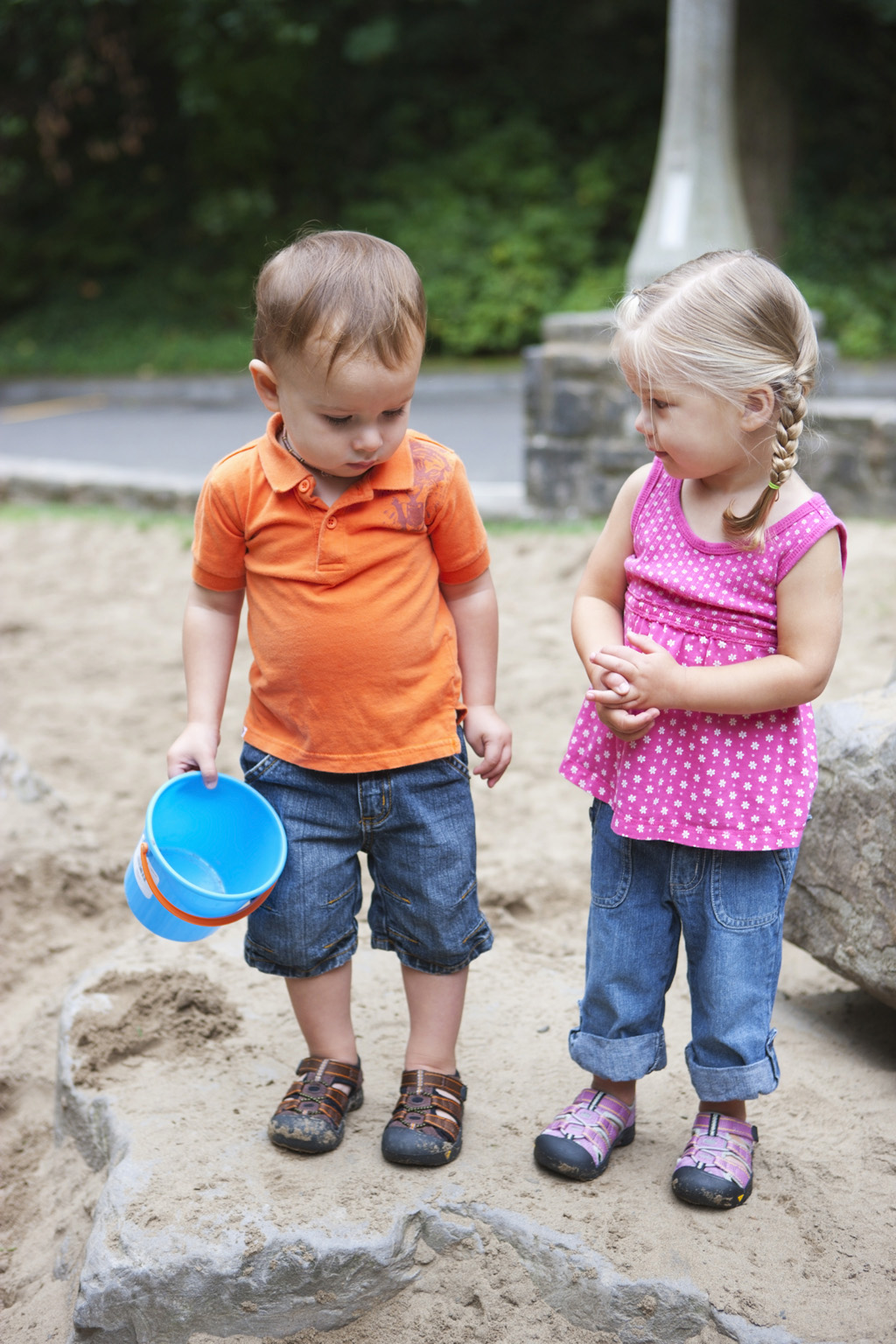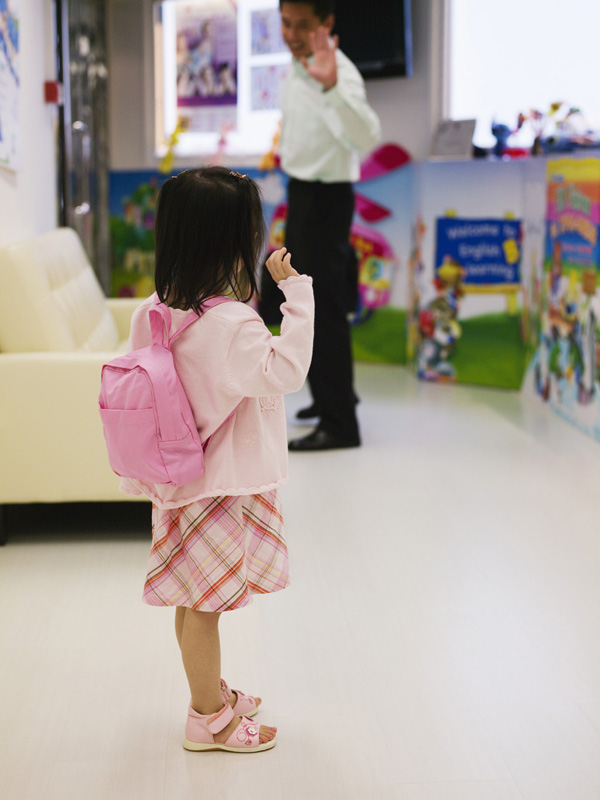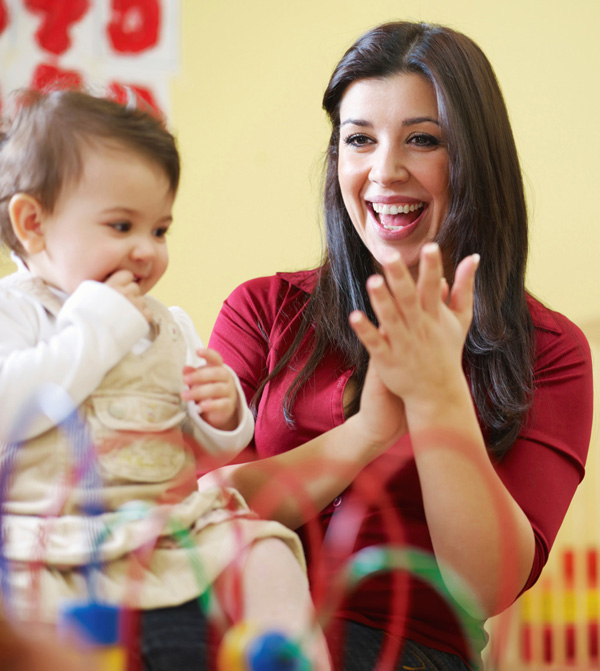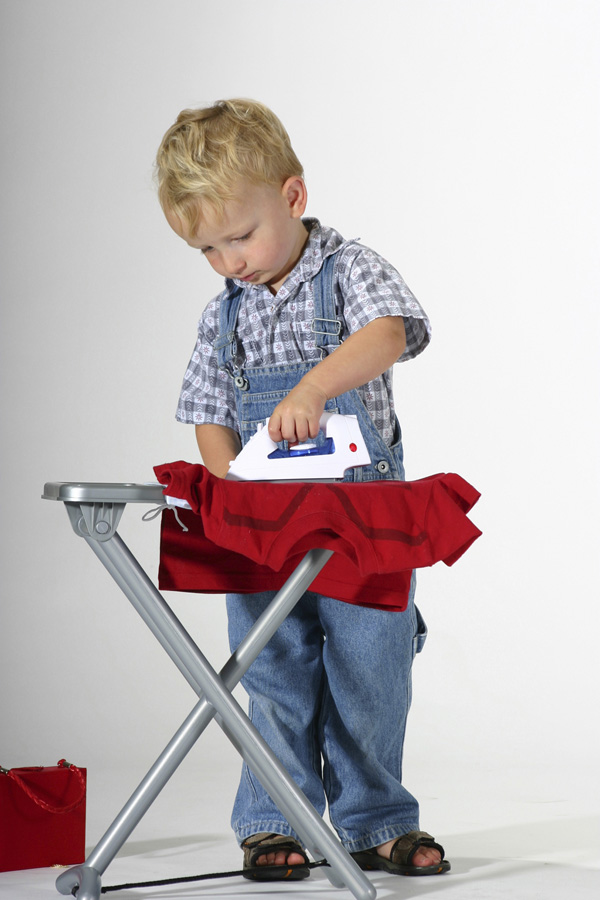Describe two to three classroom situations (e.g. rising hand to speak for example) that you would encounter in an early childhood classroom.
Question Description
After reading Chapter 9,
Social and Emotional Development
and the Social Studies
CHAPYER 9 BELOW

© Radius / SuperStock
Learning Objectives
After reading this chapter, you should be able to:
- Describe the kind of environment and teacher interaction patterns that support early learning standards for social and emotional development.
- Explain how teachers can help children acquire identity and self-esteem and develop socialization skills.
- Describe the importance ofself-regulation and how teachers help children develop self-control and learnto solve problems and conflicts.
- Identify important concepts in the nationalstandards for the social studies and resources, activities, and themesappropriate for young children.
Introduction
From the Field
Director Lucia Garay explains the difficulties related to identifying and describing emotionally healthy children.
Critical Thinking Question
- Lucia explains how important it is to address social/emotional considerations as part of an integrated approach to teaching. Why is this so important?
You know that in addition to meeting children’s physical needs and approaches to learning standards, a very important part of teaching young children is promoting and encouraging healthy social and emotional development. Some of the families of your class group are experiencing great stress—at least one family in your class is struggling with unemployment and at risk of losing its home, another has a military parent deployed to a combat zone, and a third is providing in-home care for a grandparent who recently had a stroke. You wonder how these circumstances might affect the children’s emotional stability and behavior and how you can help all the children to become confident in their ability to deal with challenges and solve problems they experience at school.
You want the children to develop a strong sense of self and relate well to their teachers and peers. You also want to incorporate a developmentally appropriate approach to encourage them to regulate their own behavior and create a caring and vibrant classroom community. In this chapter, we explore important concepts and effective strategies for social and emotional development and a developmentally appropriate approach to social studies curriculum and standards.
9.1 Early Learning Standards for Social and Emotional Development
As described in Chapter 4, the social and emotional needs of young children vary by age, personality, and circumstances. Social psychologists, led by Erik Erikson (1950), consider it critically important that young children develop secure attachments and trusting relationships, a positive self-image and confidence, independence regulated by awareness of and sensitivity to others’ feelings and expectations, and the ability to make and keep friends and function as a member of a community. These ideas provide the framework for early learning standards that focus on social and emotional development and are consistent with the 1997 National Education Goals Panel recommendations. Social and emotional development is an important element of early childhood curriculum for a number of reasons related to the development of resilience, self-regulation, and early childhood as a window of opportunity.
Resilience
Children who acquire the skills emphasized in the early learning standards for social-emotional development are far more likely to be resilient, able to cope with stress and overcome adversity.(McClelland, Cameron, Wanless, & Murray, 2007; Pawlina & Stanford, 2011; Pizzolongo & Hunter, 2011). The kinds of significant challenges children face today include violence, abuse or neglect, natural disasters, economic distress within their families, and separation from loved ones. They also experience the typical developmental dilemmas that emerge as they begin to form friendships, experience rejection, and bond with unfamiliar adults.
Resilient children display a sense of agency, a feeling of control over their own decisions, and confidence in their ability to solve problems. They also do better in school over the long term. Their mindset tends towards optimism in face of a dilemma or challenge (Pawlina & Stanford, 2011, p. 31). People without resilience, in contrast, feel powerless to improve their circumstances or solve problems (Pizzolongo & Hunter, 2011).
Consider the family caring for a disabled grandparent and the range of reactions the child might display—the resilient child might see his grandpa’s illness as an opportunity to spend more time with him, reading books, sitting with him in the room and helping his parents with care needs; the child with a lack of resilience might instead pick up on a sense of parental distress, feel anxious, and act out for attention as he observes his parents spending time caring for grandpa when he feels he needs their attention himself. Children with special needs face additional challenges and may particularly need to develop skills associated with resiliency (McClelland, Cameron, Wanless, & Murray, 2007).
Self-Regulation
Self-regulation is the ability to make decisions to control impulses in varying situations. An increasing body of research confirms strong links between early and long-term academic success and a child’s ability to regulate her own behavior, work independently, control impulses, and follow directions (McClelland, Cameron, Wanless, & Murray, 2007; Papalia & Feldman, 2011). These are learning skills that emerge with the development of executive functioning, as stressed in the Approaches to Learning standards (Chapter 7). While multiple factors including temperament, brain development, and home environment contribute to shaping these abilities, teachers certainly play an important role in helping children learn how to thrive in educational environments (Jewkes & Morrison, 2007).
Social and academic competence is linked to classrooms with warm and responsive teachers and positive teacher-child interactions. Self-regulation that is internally motivated, rather than a response to expected rewards, also seems to develop best in classrooms where children have many opportunities to make and be accountable for their own decisions (Pianta, LaParo, Payne, Cox, & Bradley, 2002).
The Early Childhood Window

© iStockphoto / Thinkstock
A secure relationship with important adults sets the stage for healthy social and emotional development.
Brain research points to the importance of acquiring these learning-related skills during the early childhood period (Masten & Gewirtz, 2006). The field of early childhood education has long emphasized the need for social and emotional competence and teachers who understand how children construct their social selves in a similar hands-on fashion as in other areas of development; studies today confirm more than ever that this continues to be the case (Saracho & Spodek, 2007).
In the next two sections, we explore a social environment that promotes healthy development of these qualities and how teachers facilitate development of self-concept, social competence, and self-regulation.
The Social-Emotional Learning Environment
Providing an environment that promotes healthy social and emotional development requires considering the social ecology of the classroom (van Hoorn, Nourot, Scales, & Alward, 2011), or how interaction patterns vary according to setting and type of activity. Think of social ecology from the perspective of Bronfenbrenner, as a network of individual personalities as well as overlapping peer groups, characterized by different ways children join, create, or are assigned by others—by popularity, interest, friendship, ability, and so on. Understanding group identification as a natural human activity is important, since groups can have an impact on the social development of individuals (Kindermann & Gest, 2009).
For instance, a teacher creates an artificial social ecology by assigning children to permanent or fixed reading groups using a single characteristic such as ability (homogeneous grouping). Subsequently, the children may recognize these distinctions and label their peers in these groups as “smart” or “dumb” and behave toward one another with this label in mind. Classroom ecology evolves more naturally when teachers vary the assignment of children to working groups (heterogeneous grouping) and monitor how children create and self-select their own membership in groups. Teachers learn a great deal about individual strengths and needs from observing the ways children form groups and interact with one another.
In the class discussed above, those same children whom the teacher labeled by ability might categorize themselves by interest, such as “artists,” or “block builders.” Or they might develop perceptions about ability but express them differently, such as “fast runners” or “good storytellers.” Of course it is also possible that some group assignments would not be positive, such as “troublemakers” or “mean kids.” Teachers use this information to help individual children with social skills and to guide groups toward inclusive and positive interactions.
Social acceptance, rejection, confidence levels, and self-image are all affected by social ecology and can also be very distinctive, fluid, or idiosyncratic from one class to the next. Teachers are most likely to establish a positive social atmosphere when they:
- Help children separate from parents and integrate quickly into the flow of classroom activity (Hendrick & Weissman, 2007; van Hoorn, Nourot, Scales, & Alward, 2007), so that they don’t remain isolated or begin the day as bystanders.
- Build an inclusive, responsive, and diverse community (van Hoorn, Nourot, Scales & Alward, 2007) that values similarities and differences.
- Establish a positive verbal environment (Meese & Soderman, 2010) that sets the stage for friendly social interactions.
- Create opportunities for developmental levels and types of play that promote face-to-face contact and socialization (Fox & Lentini, 2006; Howes & Lee, 2007; van Hoorn, Nourot, Scales & Alward, 2007).
- Intentionally teach and model appropriate social skills (Fox & Lentini, 2006; Howes & Lee, 2007).
Helping each child feel comfortable and safe at school or care is best achieved with a gradual approach. Preenrollment visits and individual interactions with the teacher build trust. Small-group play before whole-group activities helps children get to know each other. Acknowledging, modeling, and helping children express their feelings from the start allows them to feel emotionally safe and secure (Hendrick & Weissman, 2007).

© Corbis / SuperStock
Teachers understand that part of establishing
a positive social climate is helping families establish separation routines that allow the child to transition easily into school or care.
Building community is an ongoing process that also starts before children enter the program, with home visits as well as written and verbal communications. It continues every day as teachers welcome children, establish routines that involve them in caring for the classroom and each other, and plan and conduct activities that help them learn about the concept of community and investigate the community in which they live and go to school or care.
Teachers establish a positive verbal environment when they use language to demonstrate respect for children and their abilities by showing genuine interest in their activities and asking a variety of questions. Perhaps a teacher might say, “Wow, I see that you have brought in some very interesting rocks to share with us—can you tell us about where you found them and what you know about them?” Teachers model courtesy and help children understand expectations with language such as, “It would be so helpful if you could . . . ” Or “Thank you so much for putting your trucks away—you knew right where they belong.”
Teachers should also encourage children to use their words to describe the choices they make, with opportunities to make decisions that are meaningful and important (Meese & Soderman, 2010). For example, a teacher might say, “I see you have put the ‘work in progress’ sign on your block structure—you must have some big ideas about what you are building—can you tell me about what you want to do next?” These kinds of verbal interactions help children feel valued and special and create conditions that affirm positive perceptions of themselves and others.
The positive verbal environment can be used as a context for facilitating play interactions as teachers establish defined activity areas and pathways to allow for different types of social exchange. For example, by choosing and arranging furniture and equipment that encourage face-to-face encounters, teachers increase the chance that children will engage with one another (van Hoorn, Nourot, Scales, & Alward, 2007). A comfortable area with pillows or soft furniture and homelike lighting for reading and looking at books encourages conversation and personal interactions. A playhouse in the outdoor space invites children to congregate and play in small groups.
Direct teaching and modeling takes many forms, from having a conversation with an individual child about how to communicate anger with words to guiding three children through settling a dispute or constructing a set of “friendship guidelines” with an entire group or class.
Teacher Practices and Interaction Patterns

© iStockphoto / Thinkstock
Teachers use words and body language to show affection for and interest in individual children.
In many ways, a teacher or caregiver’s behavior and interaction patterns are as important to children’s social and emotional development as any materials or activities in the classroom (Copple & Bredekamp, 2009; Gallagher & Mayer, 2006; Willis & Schiller, 2011). In general, regardless of the age of children, teachers support social and emotional or affective development by building high-quality relationships with them. The specific characteristics of teacher-child interactions will vary over time and by age as teachers get to know their children, become familiar with them as individuals, establish mutual trust and respect, and commit to a long-term relationship with each child and family (Gallagher & Mayer, 2006).
Teacher behaviors that promote high-quality relationshipsinclude:
- Using words and body language that show affection and interest for individual children
- Responding promptly to children in distress
- Engaging in personal interaction or conversation with each child daily
- Recognizing and acknowledging individual and group accomplishments
- Respecting children’s need or desire for privacy
- Respecting children’s need or desire to finish an activity
- Providing children with a number of choices or directions that are manageable for their age
- Waiting to see if children can solve a problem independently before intervening
- Using positive language (I need you to . . . can you please . . . ) to convey expectations (rather than ‘no, don’t’, etc.) (Gestwicki, 2011)
9.2 Self-Concept and Socialization
Self-concept begins to develop very early, as babies first realize that their limbs are part of their bodies; it grows as toddlers, for example, begin to recognize their images in a mirror (Papalia & Feldman, 2011). This is a multidimensional concept that also affects how a child develops relationships with others.
Children acquire personal identity as they learn to recognize and feel comfortable with their self-images and bodies. They begin to understand their social identity as comprising the kinds of things that characterize them as individuals within larger groups, such as ethnicity, culture, gender, and social standing (Derman-Sparks & Edwards, 2010; Kowalski, 2007). They develop an attitude of confidence and an internalized sense of self-worth as they experience repeated success at completing tasks and solving problems. Young children also begin to develop empathy—the ability to imagine or understand how another person might feel in different situations. All these things are needed for a child to build healthy social relationships with peers and others.
Personal Identity
Young children tend to describe themselves in concrete terms, according to what they look like, what they can do, or what they like or don’t like. They can’t typically provide a description with multiple, integrated or qualitative characteristics until middle childhood (Hendrick & Weissman, 2007). Therefore it makes sense to do activities with them that focus on these concrete attributes so they can begin to develop a vocabulary for describing themselves in terms of things that are real to them, such as, “I have brown eyes” or “I like to dance.” Table 9.1 offers suggestions for steps teachers can take to foster a sense of self.
| Table 9.1: Strategies for Promoting the Development of Personal Identity | |
|---|---|
| Activity Focus | Sample Activities |
| Mirrors |
|
| Photographs |
|
| Names |
|
| Accomplishments |
|
| Preferences |
|
Social Identity
Acquiring social identity includes learning about gender, ethnicity, and ability issues. Experts on multicultural and antibias education advise teachers to focus on values, interaction patterns, and equitable teaching practices, rather than curriculum activities that highlight superficial features like flags or potentially stereotypical images of different cultures, such as a sombrero or feathered headdress (Derman-Sparks & Edwards, 2010; Hendrick & Weissman, 2007). In other words, children are taught to respond to each other courteously as individuals. This helps to create a classroom culture that values respect, caring, and the matter-of-fact recognition of similarities and differences. It also provides the grounding children need as concrete learners to understand their places in the context of others.
Strategies that promote an accurate and unbiased environment include the following:
- Using pictures of actual children and families rather than drawings.
- Making sure that photographs, displays, and materials depict at a minimum the ethnic groups represented in your class; also be sure that people of all ages are represented.
- Examining and removing any literature that includes stereotyping of any kind.
- Using only materials that are culturally inclusive and gender-neutral (e.g., showing both men and women in different occupations).
- Encouraging children to bring materials from home for the dramatic play area.
- Making sure that dolls in the dramatic play area accurately reflect ethnic features rather than dolls that are identical except for skin pigment.
- If you notice “gendrification” in play areas, where, for example, only girls are playing in the kitchen area, designate “girl only” or “boy only” days in those centers to encourage cross-gender participation.
- Making sure classroom job assignments are gender-neutral.
Activities that can be used in the classroom to contribute to development of social identity include the following:

© iStockphoto / Thinkstock
As children acquire a concept of their social self, it is important to support gender-neutral play that doesn’t steer children into stereotyped roles.
- Cut out and paint a life-size tracing of each child’s body and display these in small groupings, or as a “class portrait.”
- Mix paint to match the skin color of each child when making portraits, or to do handprints or footprints.
- Have children cut out pictures from magazines to make a book or collage of boys and girls doing similar things.
- Make personal time lines with photographs children bring from home that depict important events in their lives.
- Make class books of things children like or don’t like to eat or do, or things they fear or that make them happy or angry.
- Pair or group children to ensure cross-cultural and balanced gender interactions.
Confidence and Self-Esteem
As children’s cognitive awareness and ability to use words to describe “who I am” develops, they also begin to make comparative judgments about themselves in relation to others. Children tend to have perceptions about their self-worth long before they begin to talk about it, which typically occurs toward the end of the early childhood period (around age 7 or 8) (Papalia & Feldman, 2011). Younger children also seldom make subtle distinctions, usually categorizing themselves at one or the other end of a spectrum, such as good/bad. Further, their ability to be realistic about strengths and weaknesses can be affected by adults who lavish unwarranted praise or who are continually critical.
Essential to healthy self-esteem and confidence that motivates children to persist through difficulties is “unconditionality” (Papalia & Feldman, 2011). In other words, if a child’s self-esteem is solely contingent on success, she can develop a sense of helplessness if she is not successful on the first try. Conversely, if a child’s self-esteem and confidence are unconditional attributes, a failed attempt will only lead him to try repeatedly until he succeeds. Over time, children who lack confidence expect to fail and become more reluctant to take risks, while an overconfident child may not learn how to react to failure (Willis & Schiller, 2011).
The goal for teachers of young children is to help them develop realistic confidence in several ways, as Table 9.2 illustrates.
| Table 9.2: Strategies and Examples for Developing Confidence and Self-Esteem | |
|---|---|
| Strategy | Example |
| Encourage trial and error, so children learn that mistakes are a normal part of progress and the way we learn what does work. | Trying several different combinations of paint to make green. |
| Share your own experiences with success, failure, and problem solving. | “Last weekend I was making cookies and I burned them all in the oven; I had to start over, but the second time, I set a timer, and that batch turned out great!” |
| Identify challenges. | “Wow, our plan for the garden is going to include a lot of digging and hard work, but I know if we take our time and work together, we can do it!” |
| Model talking through options or pros and cons for solving a problem so that children see that decision making is a process. | “Well, if you want to put a tower on top of this airport, there are a couple places it could go. Let’s think about what might happen if we put it here or there before we move the blocks.” |
| Read stories to children that provide good examples of how one finds success and deals with failures. | See the appendix for a list of children’s books geared to social-emotional development. |
| Emphasize the value of trying something new as an important part of learning. | “This puzzle doesn’t have the little knobs you are used to, but look at the great dinosaur picture on the cover of the box—it shows what it will look like w
Have a similar assignment? "Place an order for your assignment and have exceptional work written by our team of experts, guaranteeing you A results." Our Service Charter1. Professional & Expert Writers: Eminence Papers only hires the best. Our writers are specially selected and recruited, after which they undergo further training to perfect their skills for specialization purposes. Moreover, our writers are holders of masters and Ph.D. degrees. They have impressive academic records, besides being native English speakers. 2. Top Quality Papers: Our customers are always guaranteed of papers that exceed their expectations. All our writers have +5 years of experience. This implies that all papers are written by individuals who are experts in their fields. In addition, the quality team reviews all the papers before sending them to the customers. 3. Plagiarism-Free Papers: All papers provided by Eminence Papers are written from scratch. Appropriate referencing and citation of key information are followed. Plagiarism checkers are used by the Quality assurance team and our editors just to double-check that there are no instances of plagiarism. 4. Timely Delivery: Time wasted is equivalent to a failed dedication and commitment. Eminence Papers are known for the timely delivery of any pending customer orders. Customers are well informed of the progress of their papers to ensure they keep track of what the writer is providing before the final draft is sent for grading. 5. Affordable Prices: Our prices are fairly structured to fit in all groups. Any customer willing to place their assignments with us can do so at very affordable prices. In addition, our customers enjoy regular discounts and bonuses. 6. 24/7 Customer Support: At Eminence Papers, we have put in place a team of experts who answer all customer inquiries promptly. The best part is the ever-availability of the team. Customers can make inquiries anytime. 
Free resources
Dissertation help
eminencepapers.com ©2023 All rights reserved. Terms of use | Privacy Policy | Revision Policy | Money Back Guarantee | Plagiarism Free Guarantee
Enjoy 20% OFF Today
Use code SAVE20
|







